Published Articles
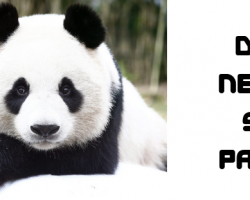
Do We Need to Save Pandas?
The big panda is no longer endangered, and the panda population is growing. The International Union for Conservation of Nature (IUCN) has changed the status of the panda in the Red Book from “threatened” to “vulnerable”. This happened mainly due to the efforts of Chinese biologists. But how did China manage to achieve this? A big panda or bamboo bear once lived in the forests of southern and eastern China in large numbers, but due to population growth and the development of agriculture, its distribution area was constantly decreasing. Now they live only in the forests where bamboo grows. For many years, China has tried to increase the population of pandas. Success came only when bamboo forests began to be restored in the country and pandas were moved there. Bamboo makes up 99% of the nutrition of pandas, and without it, they begin to starve….
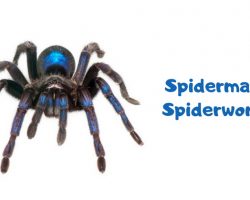
Spiderman or Spiderwoman: Determining the Sex of Your Tarantula
One of the components of the successful breeding of tarantulas is their early sex determination. Males of spiders mature much earlier than females, so by the time when females mature, they already lose the ability to reproduce, as a result of which synchronization of individuals of a different sex from one cocoon is not possible. When it comes to popular spiders, this is not a problem, you can always find a younger male and grow up, but there are also such types of bird spiders that are quite rare on sale and it would be a pity to miss the opportunity to get offspring from them. If one learns to determine the sexual identity of the spiders at the first ages and to create the appropriate conditions for individuals of different sexes in the future, then it may happen that both sexes mature at the…
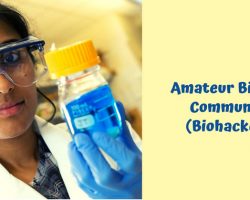
Amateur Biology Community (Biohackers)
Super modern electronic and computer industry started by enthusiasts in private garages. Perhaps the “garage” laboratories will lead in the future to similar progress in the field of molecular biology. Modern science boasts many achievements, but for some reason, some believe that it has left the spirit of “pioneering” inherent in the scientific and technological revolution of the late XIX century. That time, world-class research could be carried out in a home laboratory, but now it requires complex and expensive equipment.
Sir David Hopwood – ‘designer’ of antibiotics
Gabriele Butkute, events and administrative assistant at the Society of Biology, writes about Sir David Hopwood, a scientist featured in the Biology: Changing the World top ten poll. Professor Sir David Hopwood, a British geneticist and microbiologist, carried out fundamental research into the genetics of the soil bacteria Streptomyces, an organism which gives rise to half the world’s antibiotics in use today. Ever since the discovery of penicillin in 1928, antibiotics have been one of the most widely used groups of drugs, and this has led to increasing antibiotic resistance. After graduating in botany from St John’s College, Cambridge in 1954, Hopwood chose to do a PhD in the Botany School at Cambridge in the field of microbial genetics, focusing on a group of soil bacteria called Streptomyces. This group of bacteria were known to be a very promising source of antibiotics as they had already been shown…

Anthony Carlisle: author, surgeon and discoverer of electrolysis
by Anita Sedgwick, project officer for Biology: Changing the World. The winners of the project’s ‘top ten’ poll were announced on the 9th June, and included Anthony Carlisle. Naked guardsmen and gothic novels aren’t the things that spring to mind when you’re first asked to think of a typical surgeon, but then Anthony Carlisle was far from typical. Born in 1768 in Stillington, a village in County Durham, he started his medical career training with his uncle in York. He then trained with a surgeon in the City of Durham before moving to London, where he became a Surgeon at Westminster Hospital in 1793. He held this position until his death in 1840. Carlisle had a full and varied career. He specialised in bones of the inner ear, structure of the spleen and thyroid gland, and studied the effects of inbreeding, electrochemistry, the spread of cholera and evolution. Within his surgical work, he…
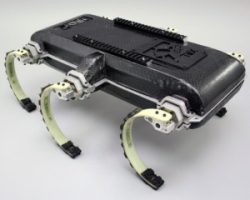
Are robot animals the future?
Michelle Reeve from the Royal Veterinary College is trying to make an eight-legged robot as part of her PhD As a child, did you dream of a future world where robots were part of our everyday life? With robots such as Johnny 5, Terminator’s T-800, and of course R2-D2 and C-3PO as major characters in popular sci-fi films, I think many of us shared this vision of the future. Today we see little sign of this robotic world we were promised, but progress is slowly being made. Robots hoover our homes, and many robots now work on production lines. Reasons for this slow progress are abundant, but the main one is simply this: it is very difficult to design, build, and run a robot that works reliably. (Shame the films didn’t show that part!) Oddly enough, biology may be the answer. In studying animal movement, biologists…
Creative Commons Licences: Copyright or Copywrong?
By Michael Walsh, BBSRC Policy Fellow at the Society of Biology, discusses the new Creative Commons licences and the Society’s advice to members. Copyright exists as a form of protection around something which you have created. Most people might immediately think of its relevance in the arts with examples such as literature or film, but it is equally important in the sciences: for example experimental techniques can also be subject to copyright. Copyright places restrictions on whether or not someone can copy all or part of your work, which is important for claiming ownership and making sure that you are acknowledged or rewarded, but sometimes this can be a bad thing. When a scientist puts their work out into the world, the current system generally has the author sign over some or all of their rights to the publisher, and then an article is published under whichever restrictions…
Behavioural Genetics: who are you?
Dr Claire Hastings introduces the field of Behavioural Genetics ahead of the Royal Institution debate entitled: “The good, the bad, and the genetically predetermined” on the 15th October, during Biology Week 2013. Your genome contains all the instructions for building you. This includes genes that affect your behaviour: from learning and memory, eating and sleeping or mating behaviour and personality. Within the human population there is variation in these genes, resulting in the behavioural differences we observe in each other. Genes that affect behaviour are a huge part of what makes you, you. They often provide you with more of a sense of self than the genes involved in your physical appearance such as height or eye colour. So who are you? Are you the simply sum total of your genetic material? Is your behaviour predetermined by your genes? Or is there more to it? Scientists have been working to answer these questions for…
Bioscience to Biosecurity; the Policy Lates talks
Policy Lates is a discussion series from the Society of Biology‘s policy team, held at our HQ at Charles Darwin House. We bring a panel of experts together for an informal debate on a contemporary science policy topic, with lots of time for audience questions and convivial discussions. In July 2013, Policy Lates looked into the issue of biosecurity in the life sciences, and the potential for intentional or accidental harm coming from new technologies and discoveries. Talks from the debate, entitled ‘Bioscience to bioweapons: how do we benefit from open dual-use research whilst avoiding misuse?’, are now available: Professor Malcolm Dando FSB (Chair) Professor of International Security, Division of Peace Studies, School of Social and International Studies, University of Bradford. Professor Wendy Barclay Chair in Influenza Virology, Department of Medicine, Imperial College London. Daniel Grushkin Freelance journalist; vice-president and co-founder of Genspace community biology laboratory, New York….
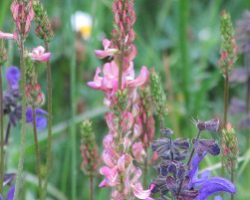
The meadows of Transylvania – a biodiversity hotspot
Dr Barbara Knowles FSB, Senior Science Policy Adviser at the Society of Biology, devotes much of her time to preserving Transylvania’s hay meadows. Dr Laura Bellingan FSB, Head of Policy at the Society of Biology, visited her recently and has written about her experience: If I’m asked to think of biodiversity hot-spots worthy of conservation, wilderness areas with sparse if any human populations tend to come to mind. Certainly, long-established farmland wouldn’t be my first guess. However, as surprisingly often is the case, the seemingly obvious answer is wide of the mark! It is indeed true that an island of biodiversity, with statistics that rival wilderness areas has been created by centuries of dairy farming in rural Transylvania. My colleague Barbara Knowles visited this area almost five years ago. She was so enchanted by its unique and complex ecology, natural beauty and friendly people that she has devoted…
